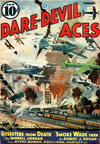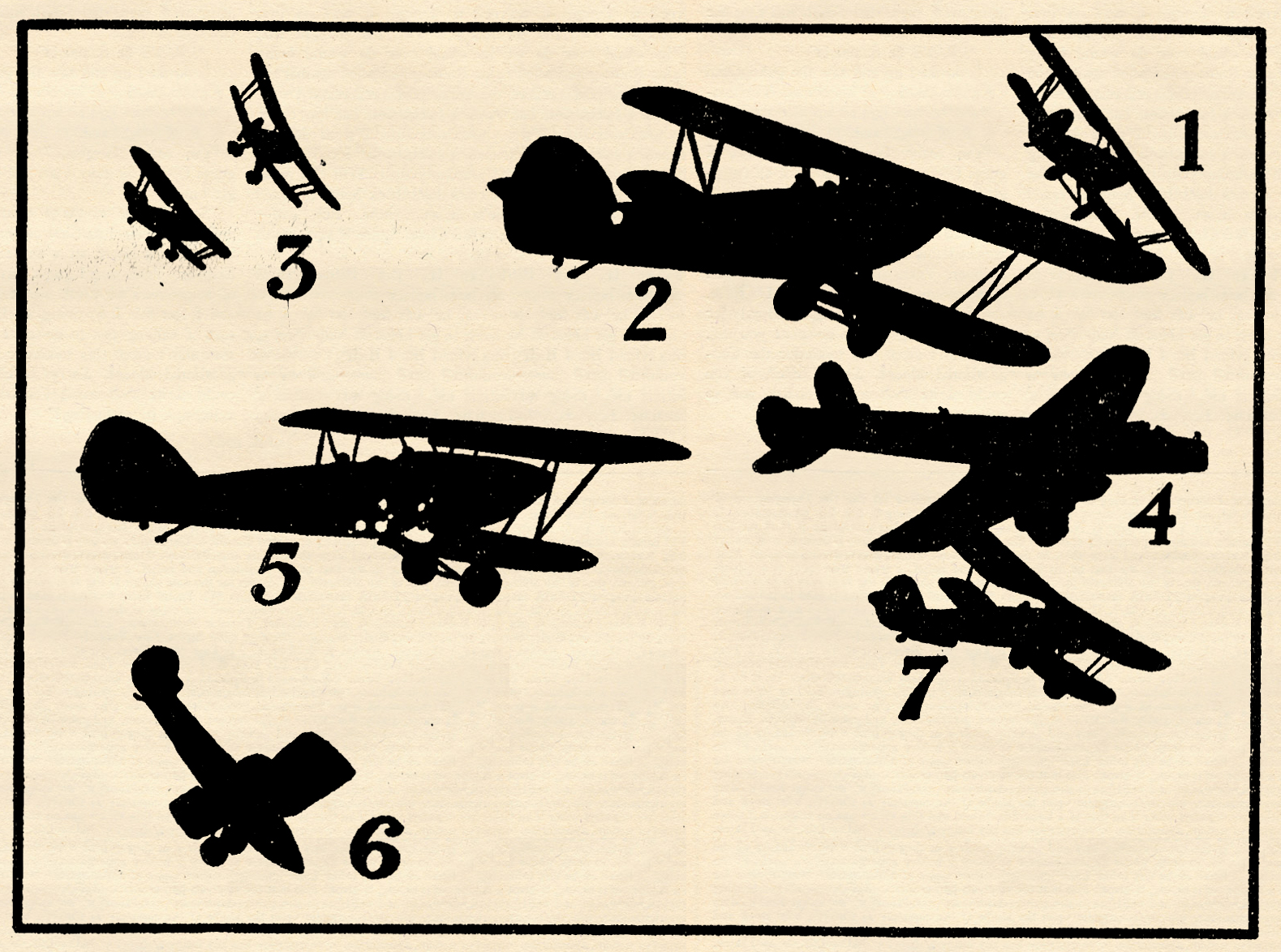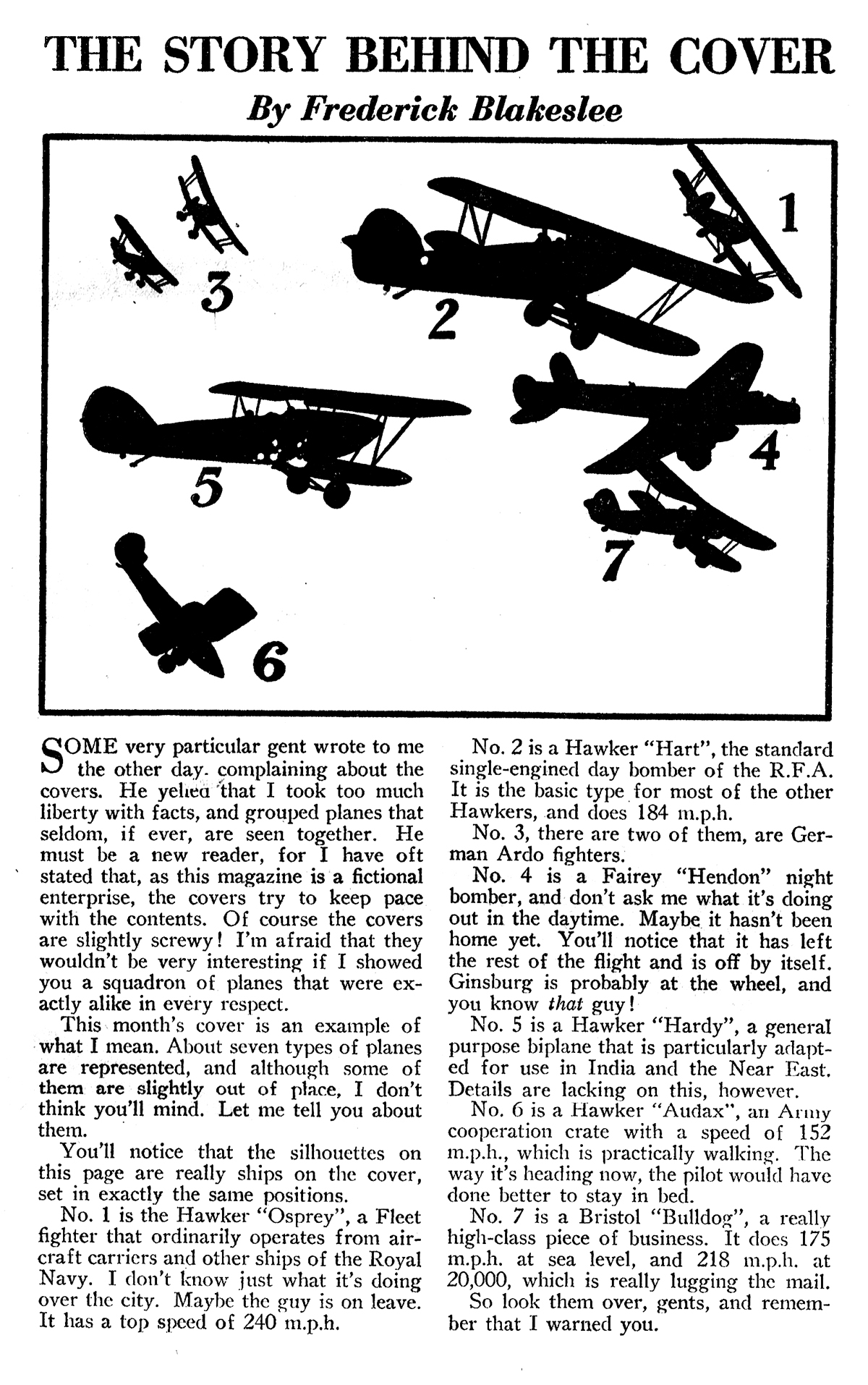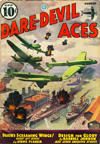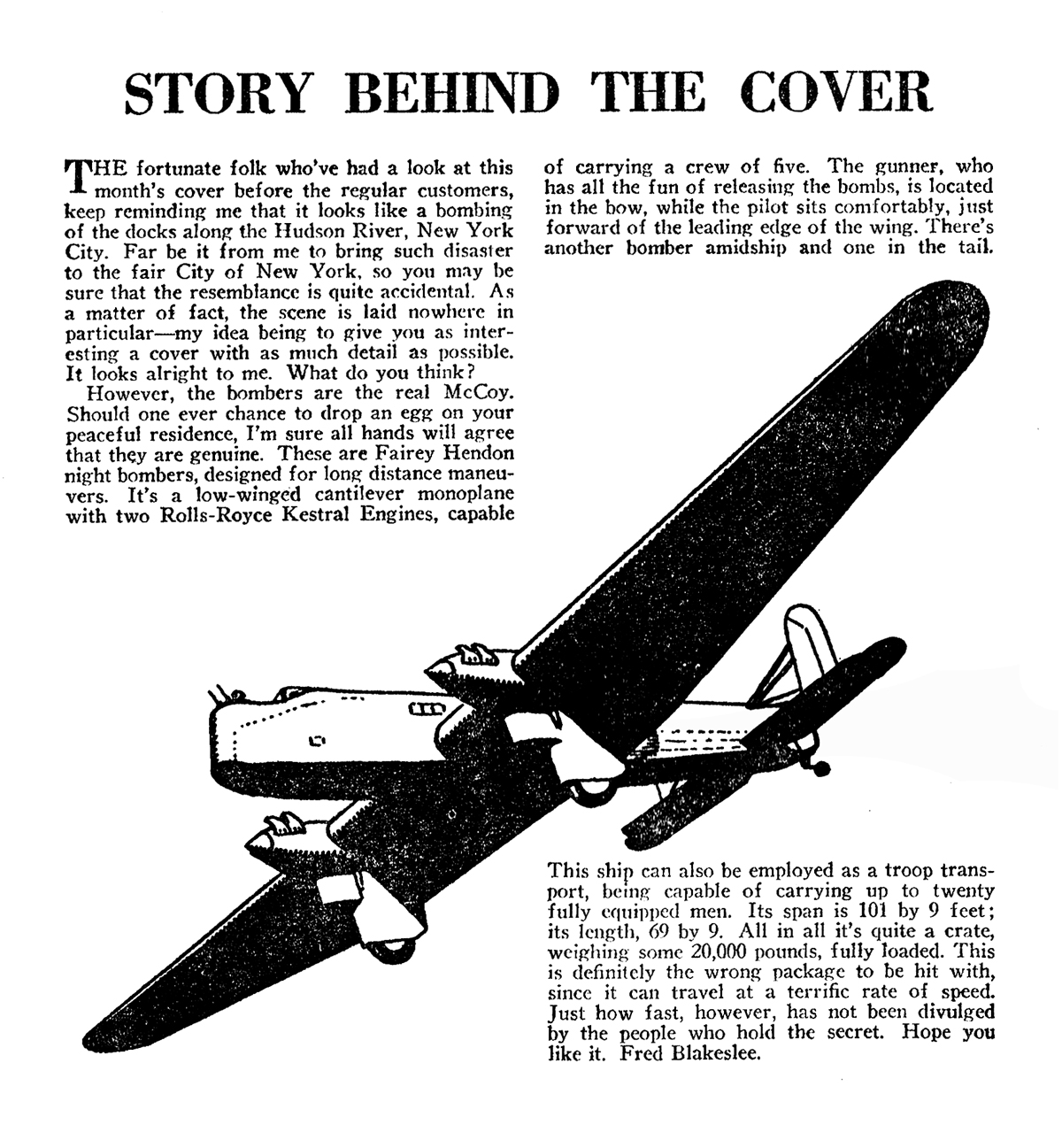“Fairey Hendons and the Gladiators” by Frederick Blakeslee
FREDERICK BLAKESLEE painted all the covers for the entire run of Dare-Devil Aces. And each of those covers had a story behind it. For the June 1937 Dare-Devil Aces, Mr. Blakeslee’s paints a flock of Fairey “Hendons” bombing a big gun emplacement along with a flight of Gloster “Gauntlets”.
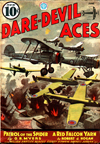 ON THE cover this month you will find a flock of Fairey “Hendons” bombing a big gun emplacement. They’ve come over just around dusk, when everything is quiet, and they’re giving the boys below plenty of hell.
ON THE cover this month you will find a flock of Fairey “Hendons” bombing a big gun emplacement. They’ve come over just around dusk, when everything is quiet, and they’re giving the boys below plenty of hell.
As an escort, they have a flight of Gloster “Gauntlets,” those fast, speedy jobs that we’ve heard so much about recently. One of the most feared types of planes in the world, the “Gauntlet” is a tough baby to mingle with.
But we’re not concerned for the moment with the “Gauntlets.” We’ve devoted our attention to the nearest plane, the one without the streamlined pants on the wheels. It’s a “Gladiator” and gentlemen, what a job!
The “Gladiator” is a development of the “Gauntlet” and it’s really a better ship. You will notice that the “Gauntlet” is a two-bay wing job. Well, the designers saw fit to make the “Gladiator” a single-bay ship, and I think they were right.
Another deviation from the “Gauntlet” is the single-strut cantilever undercarriage. They constructed these babies so that they’d last and this single-strut business is a testimonial to their confidence.
When it comes to throwing steel around the sky, the “Gladiator” can take fine care of itself. Its armament consists of four machine guns, and they speak a language of their own. Personally, I wouldn’t want to speak with any of them.
When you talk about power, the “Gladiator” must be considered. In its motor-bed is a Bristol “Mercury IX,” a nine cylinder radial job. This power-house is air-cooled and supercharged, and when you give it a bit of throttle it goes places!
Do you want speed? This baby will do 255 m.p.h. at 14,500 feet, and it has a service ceiling of 32,800 feet.
The “Gauntlet” isn’t far behind in performance. It’s equipped with a Bristol “Mercury V.I.S.,” another radial, air-cooled engine. It boasts of speed of 230 m.p.h. at 15,500 feet and has a service ceiling of 33,500 feet.
Frederick Blakeslee.

“Fairey Hendons and the Gladiators: The Story Behind The Cover” by Frederick Blakeslee
(June 1937, Dare-Devil Aces)





